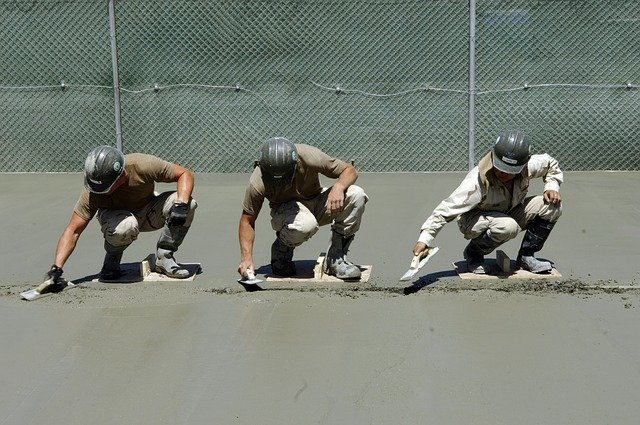We have all seen cement mixers running from one construction site to another. Once they arrive, awaiting crews spring into action spreading the wet mix to fill all the available area. They work feverishly to eliminate air bubbles and gaps and use floats and screeds to level the top. As the mixture of gravel, sand, water, and ground limestone begins to set or cure, they use troweling machines to obtain the proper surface finish.
The opportunity to form and shape cement into virtually any configuration quickly passes as it soon solidifies. After a few hours, it has become too hard to alter except with jackhammers or dynamite even though it will continue to cure for months as the moisture gradually escapes.

Sometimes dates or coins are inserted into the unfinished concrete to mark the year of construction, but this too must be done soon after pouring or the opportunity will be lost. Occasionally, someone slips or intentionally mars concrete that is nearly set and the results must be either chiseled away or preserved for perpetuity.
A relatively new process has become popular for sidewalks and porches known as stamped concrete. With this method, a mold or form is laid on top of the cement shortly after pouring creating a design resembling anything from bricks to stones. Once again, however, it must be done fairly soon after the concrete is poured or the opportunity to shape the wet mix will be forever lost.
The process of shaping and forming concrete is often used to illustrate the need to provide godly guidance to children while they are small. During their younger years, most children are very much like the moist cement and will conform to whatever influences are applied to them. As they mature and move into their teens, their minds and souls definitely harden, and although good influences and direction are still crucial, the opportunities of the early years are past.
This is why God tells us in Deuteronomy 6 to impress His words and laws on our children. Parents are to talk about them at home, on the road, the first thing in the morning and the last thing at night. They should take every opportunity to apply God’s Word that it might make a permanent impression on their children just like concrete that has been stamped. All too soon, the children will make their own choices, but providing godly forms, foundations, and boundaries early on will help to establish a solid and beneficial life.
The Hebrews were even to affix God’s laws to their homes’ doorposts as constant visual reminders of God’s promises and expectations. Still today many Jewish homes have mezuzahs fastened to their doorframes with Deuteronomy 6:4-9 and 11:13-21 carefully stored within.
Some parents protest saying that they want their children to make up their own minds about God and refuse to share anything about Him. That’s like pouring concrete on the ground with no form or mold and expecting it to turn into something useful and beautiful. In fact, saying nothing about God says a lot about God. It implies He is either non-existent or not important. Deuteronomy reminds us that He affects all of life and our children need to know this from the earliest age.
It’s ironic (or not) that human beings are formed from earth’s clay which, like concrete, can be molded and shaped almost infinitely while wet, but which becomes hard and immovable when baked or fired. No potter would ever think of firing an unformed clay lump with the intention of shaping it later.
As we begin a new year and a new decade, let’s take every opportunity to impress our children and grandchildren with God’s Word and His values. And let’s be sure to model them as well, for children can see through hypocrisy quicker than concrete sets up. While we’re at it, let’s impress ourselves with these same elements that can still influence us if we allow them to.
Happy New Year, George